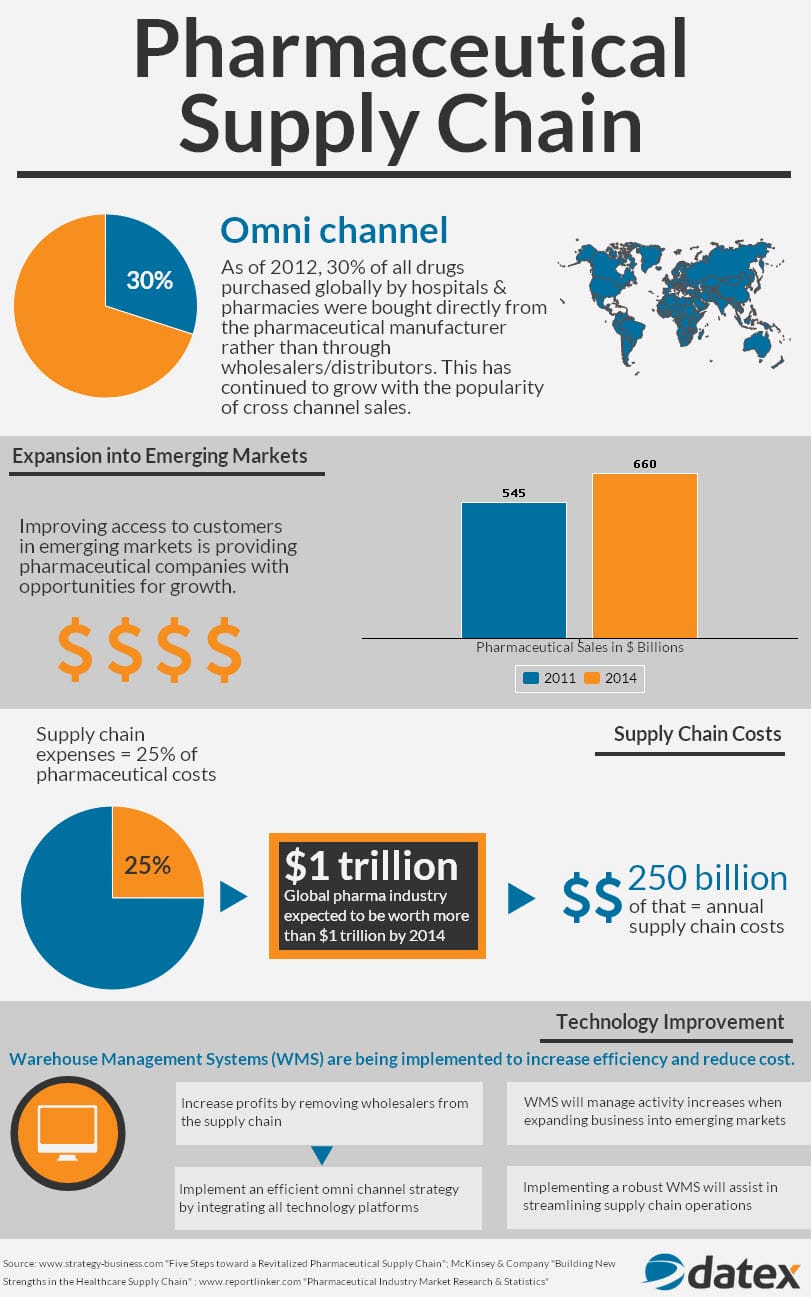
Since 2012 pharmaceutical manufacturers have begun to cut out wholesalers and distributors and focus on a more direct-to-consumer (D2C) approach. Currently, more than 30% of pharmaceuticals are distributed directly to hospitals and pharmacies. This shift towards cross channel sales is due to the increasing prices of pharmaceuticals. In 2014 the estimated cost of handling pharmaceutical inventory throughout the supply chain was $250 billion globally. Eliminating the middle men have helped to reduce these costs and have made these items more affordable for the people that need them.
Pharmaceutical companies have also begun to focus more on “emerging markets”, identifying areas that were previously under served. This provides areas where competition is low or non-existent and allows for business growth. In 2014 pharmaceutical sales reached $660 billion by addressing these markets.
To aid in managing the changes encountered in these complex pharmaceutical supply chains, businesses are investing more in warehouse management solutions to help increase profits, manage omni-channel and cross channel sales and streamline overall operations.
